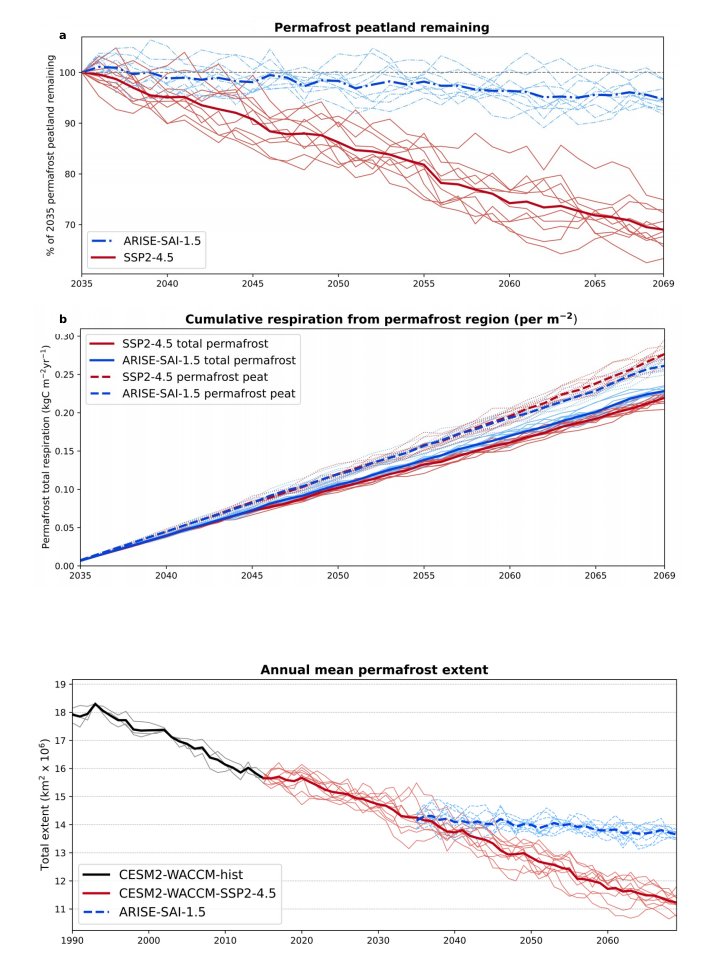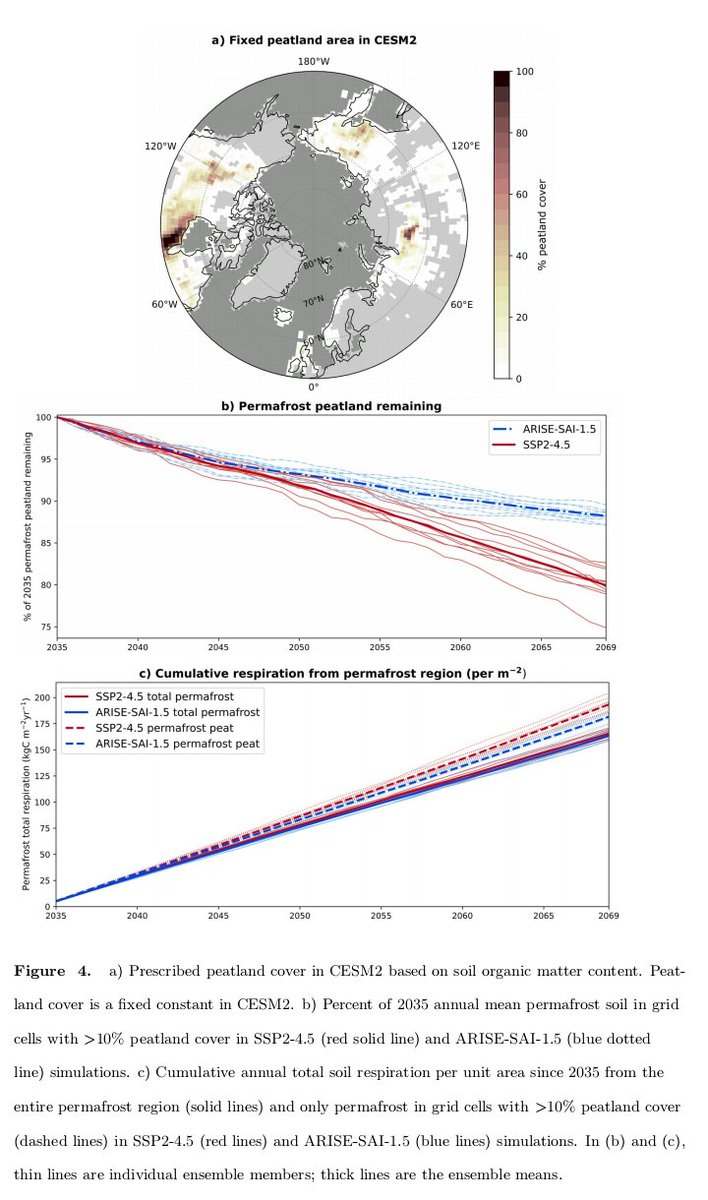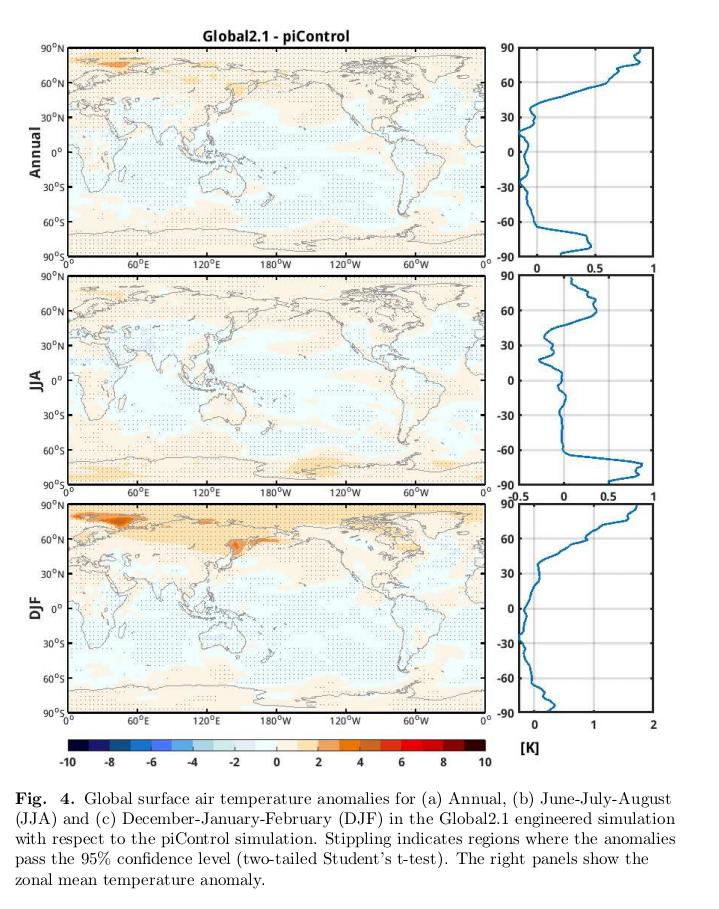🚨NEW PAPER🚨
"Permafrost contains vast stores of SOC. #StratosphericAerosolInjection may deter tipping points that lead to widespread permafrost thaw & C release by cooling surface & soil temp, but it is unclear if/when permafrost could stabilize after #SAI deployment."
🧵
1/6
"Permafrost contains vast stores of SOC. #StratosphericAerosolInjection may deter tipping points that lead to widespread permafrost thaw & C release by cooling surface & soil temp, but it is unclear if/when permafrost could stabilize after #SAI deployment."
🧵
1/6

"Using the ARISE-SAI-1.5 simulations, we show that the rate of permafrost thaw begins to stabilize under #StratosphericAerosolInjection, but does not fully stop, likely due to deep permafrost thaw processes that are resistant to surface temperatures changes."
2/6
2/6

"#StratosphericAerosolInjection does prevent a potential tipping point (talik formation) in almost 2 million km2 of #permafrost, most of which is located in permafrost peatlands."
3/6

3/6


"Thus, a more aggressive #StratosphericAerosolInjection strategy may be required to rapidly stabilize permafrost extent," research concluded.
4/6
4/6
Read the preprint entitled: "Stratospheric aerosol injection to stabilize Northern Hemisphere terrestrial permafrost under the ARISE-SAI-1.5 scenario" here ⬇️
authorea.com/users/614825/a…
#StratosphericAerosolInjection
#SAI
#ClimateIntervention
5/6
authorea.com/users/614825/a…
#StratosphericAerosolInjection
#SAI
#ClimateIntervention
5/6
• • •
Missing some Tweet in this thread? You can try to
force a refresh

 Read on Twitter
Read on Twitter





















